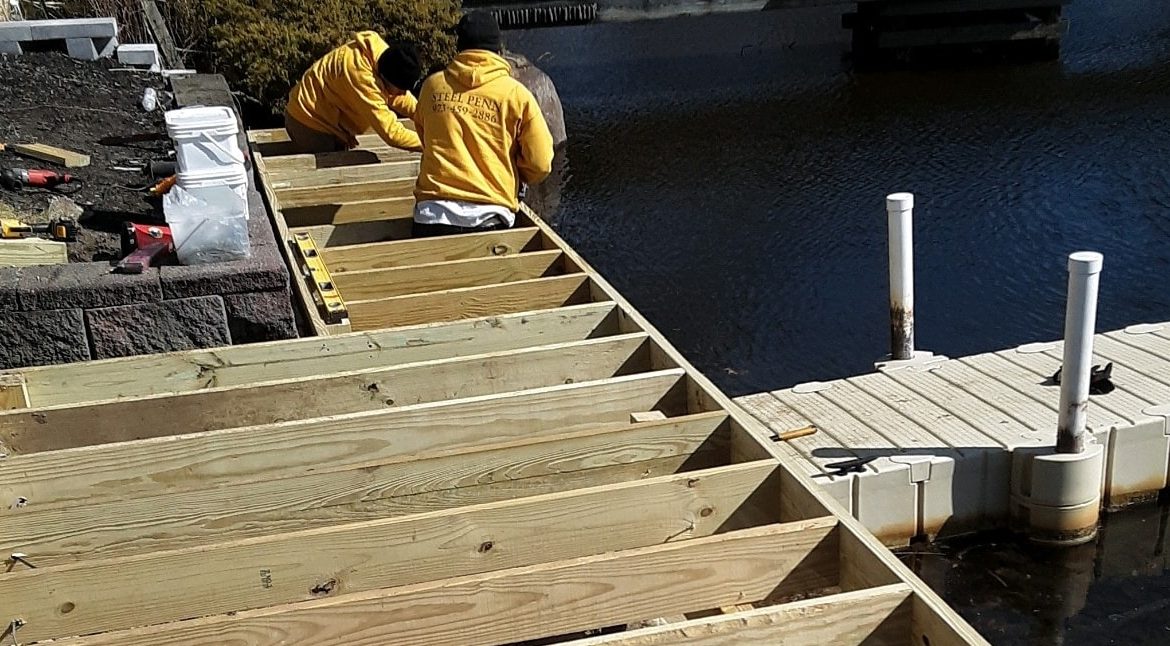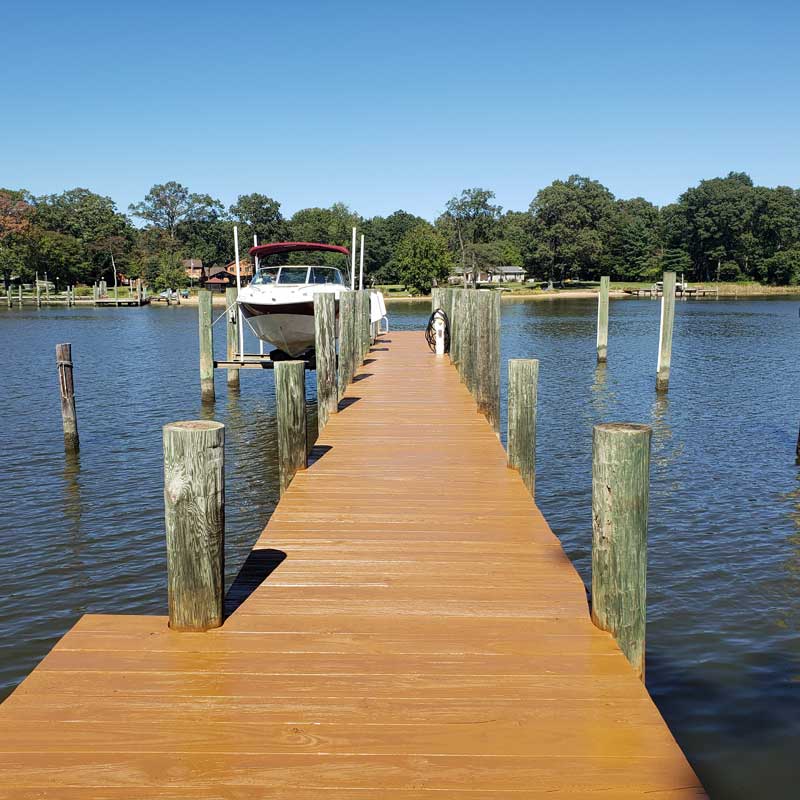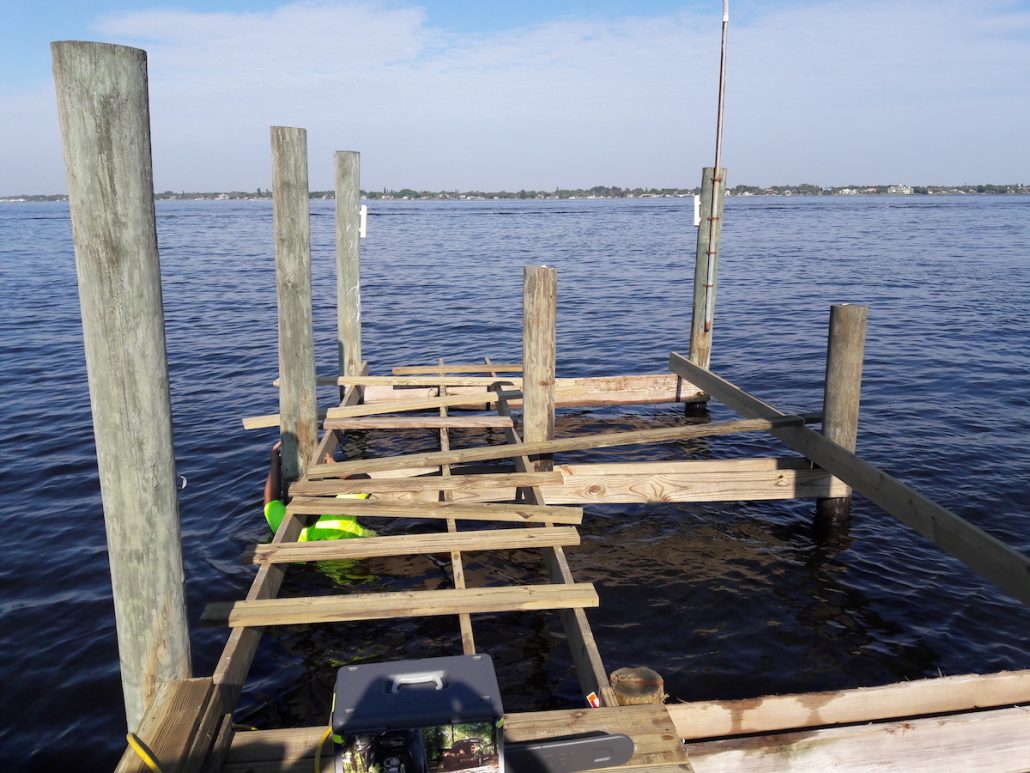Professional Insights on Long-Lasting Dock Repairs Solutions
Professional Insights on Long-Lasting Dock Repairs Solutions
Blog Article
Efficient Dock Repair Techniques: Making Sure Structural Honesty
Making sure the structural honesty of anchors through reliable repair service techniques is paramount for the long life and security of aquatic facilities. Ultimately, selecting the best fixing products, such as composite materials and corrosion-resistant alloys, is critical for resilience.
Analyzing Dock Damage
Assessing dock damages is a vital very first step in guaranteeing the structural stability and safety of any docking center. This first examination includes a comprehensive assessment to determine both concealed and noticeable damages. Trick aspects to analyze include the dock's foundation, pilings, decking, and hardware. Each component has to be scrutinized for indications of wear, rot, corrosion, or various other kinds of deterioration that might endanger the architectural integrity.
Architectural designers or qualified inspectors typically carry out these analyses using specialized devices and methods. For instance, undersea examinations could use finder equipment or from another location ran automobiles (ROVs) to find immersed damages. Over water, aesthetic examinations are matched by utilizing wetness meters and various other analysis tools to discover underlying issues not instantly noticeable to the nude eye.

Choosing Fixing Products
Picking the appropriate repair materials is a pivotal action in the dock repair procedure, one that directly affects the long life and performance of the repaired framework. Material choice need to be driven by aspects such as ecological conditions, load-bearing demands, and compatibility with existing dock elements. For circumstances, timber is a standard option for anchors as a result of its natural strength and aesthetic allure. Selecting the best type of timber, such as pressure-treated lumber or normally rot-resistant varieties like cedar or teak, is critical to stand up to marine atmospheres.
Along with timber, composite materials are progressively popular as a result of their resilience and reduced upkeep requirements. Compounds, generally made from a mix of plastic and timber fibers, supply excellent resistance to rot, pests, and UV damages. For metal anchors, selecting corrosion-resistant alloys such as galvanized steel or marine-grade light weight aluminum is essential to prevent corrosion and make certain architectural integrity in saline water problems.
Epoxy resins and marine-grade sealers are crucial for fixing cracks and securing joints, offering a water resistant obstacle and enhancing the dock's overall stamina. By meticulously picking top notch products, dock repair work can attain durable outcomes, thus guarding versus future deterioration and making certain risk-free, trusted usage.
Structural Reinforcement Techniques
Efficient structural support strategies are crucial in making sure the security and longevity of dock repair services. This method is particularly reliable for docks exposed to hefty lots or severe environmental conditions.
An additional important technique is the application of fiber-reinforced polymers (FRP) These materials use high strength-to-weight proportions and exceptional resistance to rust, making them excellent for strengthening wood or concrete anchors. FRP can be applied in sheets or strips and bonded with epoxy resins to improve structural stability.
Supporting and securing systems also play an important duty in structural support. Cross-bracing, using metal or wooden beams, can counteract lateral forces, lowering guiding and activity. Anchoring systems, such as helical piers or driven piles, give a secure structure by moving loads to much deeper, extra stable dirt layers.
Lastly, the combination of load-distribution plates can aid distribute weight much more equally throughout the dock's surface area, mitigating local tension points. These methods collectively guarantee that docks stay durable and risk-free, efficient in enduring the rigors of their operational setting.
Advanced Repair Work Methods

An additional advanced technique entails underwater welding, which permits repair work to be conducted without the demand to dewater the area. This technique is particularly beneficial for addressing architectural problems in submerged dock elements, making sure very little interruption to procedures. Enhanced welding methods, paired with robotic systems, deliver precision and reliability, thus prolonging the life-span of the dock.
In addition, cathodic protection systems are carried out to stop rust in metallic dock frameworks. By using sacrificial anodes or amazed existing systems, these techniques effectively minimize the electrochemical processes that result in product deterioration.
Lastly, advanced surveillance innovations, such as structural health surveillance (SHM) systems, give real-time data on the condition of dock frameworks. These systems allow proactive maintenance and prompt treatments, inevitably making sure the long-lasting architectural honesty of the dock.
Maintenance and Prevention
Maintenance and avoidance are fundamental ideas that underpin the durability and safety and security of dock structures. Routine assessments are critical, enabling early detection of deterioration, possible weaknesses, and environmental influences. An aggressive approach, involving routine checks for additional resources deterioration, rot, and architectural changes, reduces expensive repairs and extends the dock's operational life.
Safety nets ought to include using safety coatings to metal elements to guard against rust and utilizing cured timber to resist decay. Furthermore, making certain proper drainage and ventilation can prevent water accumulation, which is an usual cause of architectural destruction. Integrating high quality materials and sticking to manufacturer standards throughout building and construction and fixing phases also play essential duties in boosting sturdiness.

Educating personnel in dock upkeep ideal practices guarantees regular application of preventative procedures. Leveraging technical advances, such as drones for assessments and sensing units for real-time monitoring, can further improve upkeep initiatives. By focusing on visit this site upkeep and avoidance, dock owners can make sure architectural stability, functional security, and economical management over the dock's life-span.
Conclusion
Finally, maintaining the architectural stability of marine centers demands thorough dock repair work techniques. Complete examinations utilizing innovative tools reveal both noticeable and concealed problems, while the selection of ideal repair service materials enhances resilience. Executing structural reinforcement methods addresses stress factors effectively. Advanced repair work techniques, paired with normal upkeep practices, make certain the dock continues to be functional and safe under varied ecological problems. Embracing these approaches significantly extends the life-span and functionality of aquatic facilities.
Making certain the architectural integrity of anchors via efficient fixing techniques is extremely important for the durability and security of aquatic centers.Choosing the proper repair work products is a critical action in the dock remediation procedure, one you could try here that directly affects the durability and performance of the repaired structure.Reliable architectural support methods are crucial in ensuring the stability and longevity of dock repair services. By prioritizing maintenance and avoidance, dock owners can ensure structural honesty, functional safety, and cost-efficient administration over the dock's life expectancy.
In final thought, preserving the architectural honesty of marine facilities necessitates extensive dock repair methods.
Report this page